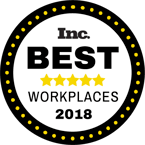
A few years ago, if you had asked what the top safety tips were for plumbing businesses and their technicians, most answers would involve some sort of COVID-19 precautions. However, even as we stray further away from daunting mentions of the pandemic, we simply cannot neglect to continue the safety practices and procedures concerning general technicians and businesses’ well-being.
Adhering to proper plumbing safety tips is a must, not only to shield employees and customers from harm and reduce company liability, but also to encourage continuous growth. Keep reading to learn more about the risks of improper workplace safety management, along with the best practices your team should be following to ensure employee, business, and, of course, customer safety.
Considering the Safety Risks of Plumbers and Plumbing Businesses
The U.S. Bureau of Labor Statistics reported a nonfatal occupational injury and illness incidence rate of 3.1 per 100 full-time plumbing contractors in 2022. Of these incidents, almost half required the affected employee to take time off work as a result. A loss of workers due to injury or illness can be detrimental, especially at a time when hiring and retaining skilled plumbers is such a challenge.
Unfortunately, professional plumbers face job hazards daily depending on the type of work they’re conducting. Equipment gas leaks, exposure to harmful substances such as chemicals or sewage, and even hot water burns are some of the many potential hazards plumbing professionals can encounter. Failing to follow proper precautions can easily turn risks into employee and/or customer injury or illness.
In fact, when a customer is injured as a result of a worker’s negligence, company operators can face lawsuits that can incur a strong financial burden. Furthermore, workers who are injured on the job may need to file a worker's compensation claim to obtain lost wages. While most employers are required by law to possess workers' compensation insurance protection, a higher frequency of injury claims can result in higher premium costs year after year, raising annual insurance costs.
Top Plumbing Safety Tips For Plumbing Technicians and Businesses
While health hazards are a seemingly omnipresent threat, plumbers can reduce the chances of employee loss, steep workers' compensation insurance costs, and potential lawsuits with plumbing safety tips for professionals and businesses. To keep employees and customers safe while reducing costly company liability, consider these five strategies for mitigating and preventing workplace risks:
1. Develop a Workplace Health and Safety Policy
Regardless of the industry, workplace health and safety policies are crucial to the well-being of employees and customers alike. With many plumbers facing hazardous conditions and tasks each day, developing a workplace health and safety policy creates a resource that protects plumbing teams by defining company expectations and laying out daily safety procedures and best practices.
When developing your policy, be sure to not hold back with the level of detail you provide. Building codes, equipment handling and inspection procedures, and incident response procedures are just some of the many important safety processes employees should have access to. This policy not only outlines common precautions but also helps facilitate a company culture that prioritizes employee safety and well-being above all else.
2. Supply All Necessary Personal Protective Equipment (PPE)
 During the pandemic, personal protective equipment (PPE) became quite a familiar term for all of us in the trades. While the days of face mask requirements have dwindled nationwide, there are still everyday PPE requirements plumbers must follow when navigating daily service tasks. From plumbing piping repair to navigating electrical wiring, PPE is important (and sometimes required under regulation) to ensure protection against the many hazards associated with plumbing work.
During the pandemic, personal protective equipment (PPE) became quite a familiar term for all of us in the trades. While the days of face mask requirements have dwindled nationwide, there are still everyday PPE requirements plumbers must follow when navigating daily service tasks. From plumbing piping repair to navigating electrical wiring, PPE is important (and sometimes required under regulation) to ensure protection against the many hazards associated with plumbing work.
Before heading out to address work orders, make sure technicians are equipped with PPE including:
- Hard hats
- Face masks
- Safety goggles
- Protective work boots
- Protective gloves
- Knee pads
A plumber who fails to adhere to PPE requirements faces a heightened risk of becoming injured or ill on the job. Plus, they can put customers at risk if they’re handling hazardous substances. As part of your workplace safety policies, don’t forget to outline all PPE requirements and discuss the risks your workers could incur by failing to comply, such as the denial of workers’ compensation claims.
3. Offer Health and Safety Training
Across the country, state plumbing boards hold annual or biannual continuing education (CE) requirements for licensed residential, journeyman, and master plumbers. To meet requirements, plumbers can complete state-approved CE courses and update their knowledge regarding topics such as sanitary drainage, water distribution, and, of course, plumbing industry safety.
Beyond these local requirements, it’s wise to offer health and safety training in-house, particularly to ensure that the technicians who represent your brand in the field also embody your health and safety policy while on the job. Consider hosting monthly health and safety training meetings, allowing time for technicians to ask questions about your company’s incident response plans. Keeping employees updated on safety precautions can help plumbing companies in the long run.
4. Practice Thorough Job Planning and Communication
Effective work order planning and communication not only supports employee efficiency but can also contribute to their all-around safety. Before arrival, technicians should have access to important customer details that could be used to streamline both performance and protection. This includes data such as service history, customer contacts, warranty information, and homeowner preferences.
In the event of any underlying safety concerns, technicians must communicate these worries to both customers and management if the issue can’t be confidently addressed on their own. No matter the plumbing issues in a customer’s space, from basic plumbing fixture snags to more major issues with the owner’s water supply, thorough communication is the key to completing all your projects safely.
5. Ensure Proper Insurance Coverage
We’ve done a lot of talking about workers’ compensation insurance and why it’s necessary, not only as a legal precaution and financial protection, but also as a means to provide your employees with wages in the event that they’re injured on the job. It’s also wise to purchase a general liability insurance policy in the event your company causes bodily injury or property damage to customers.
Beyond these insurance coverages, you should also confirm proper coverage on the plumbing projects your company provides. For instance, extended warranty coverage can apply to diagnostics, hourly labor for repairs, and parts replacement on all major brands, ensuring that your team—and your customers—have financial protections across residential and commercial plumbing services.
To discover the best extended warranty for your plumbing business, explore JB Warranties plans today.

Tommy Cue
Vice President of Strategic Partnerships at JB Warranties






